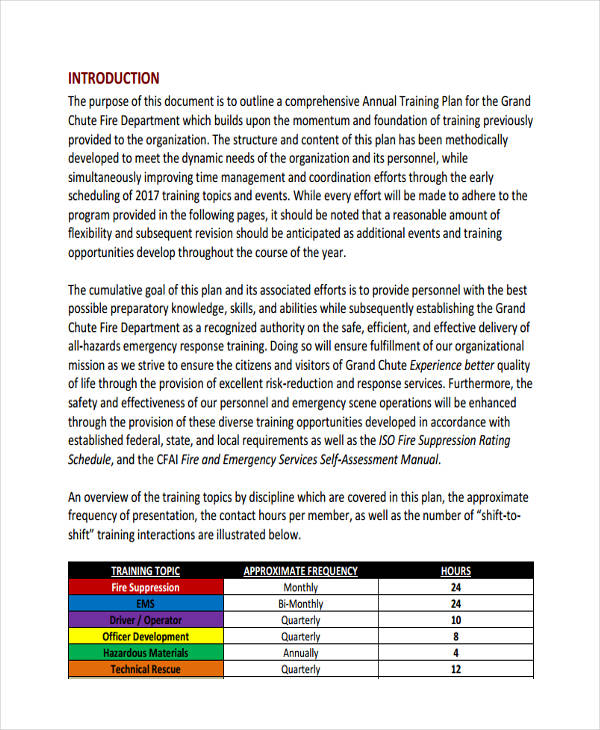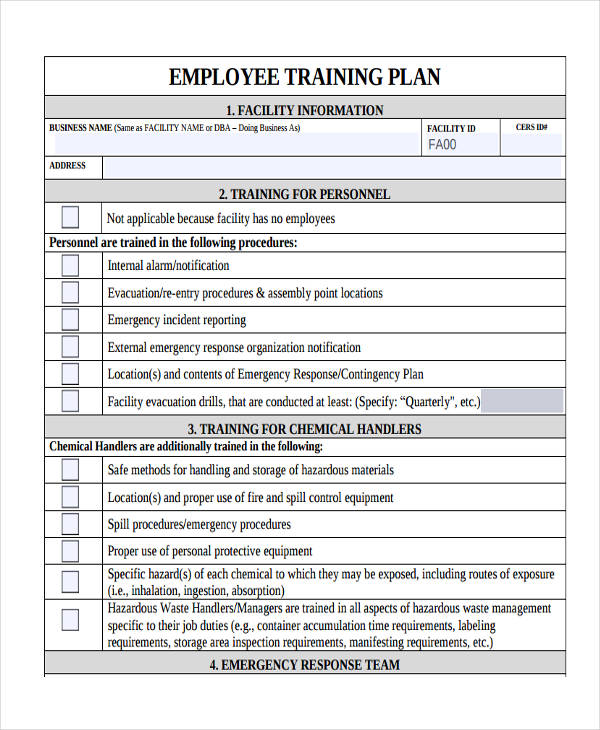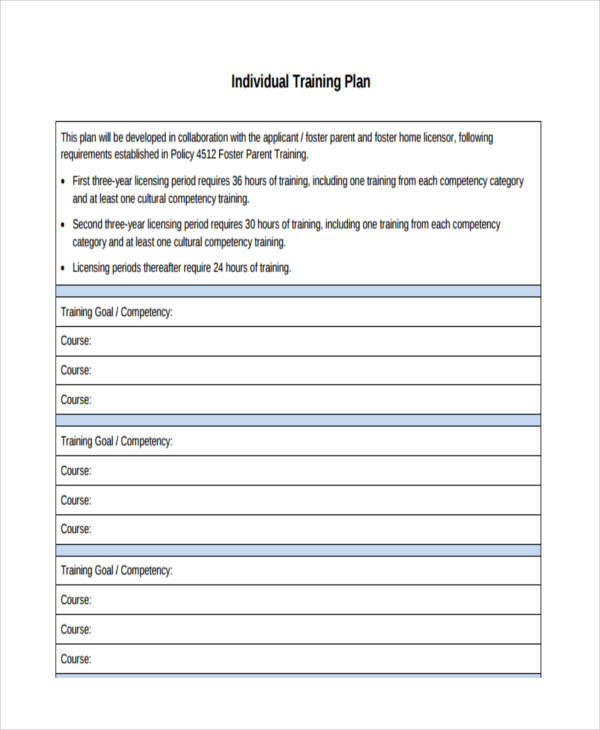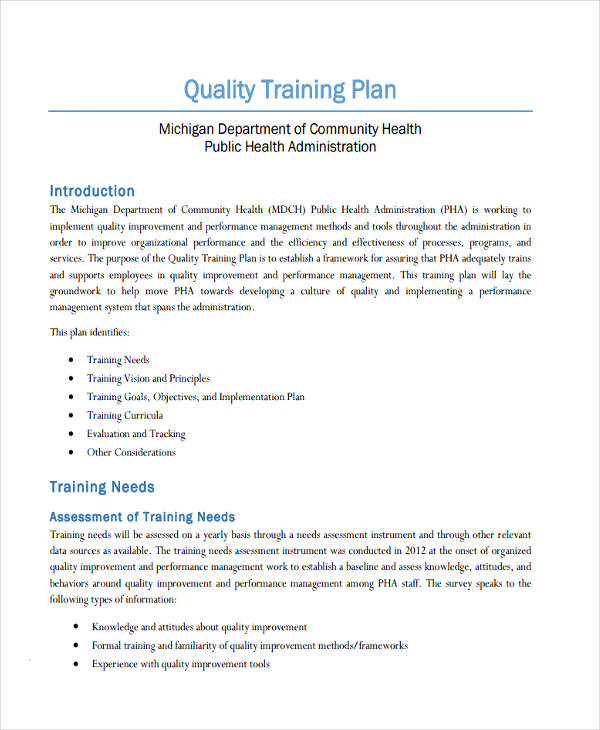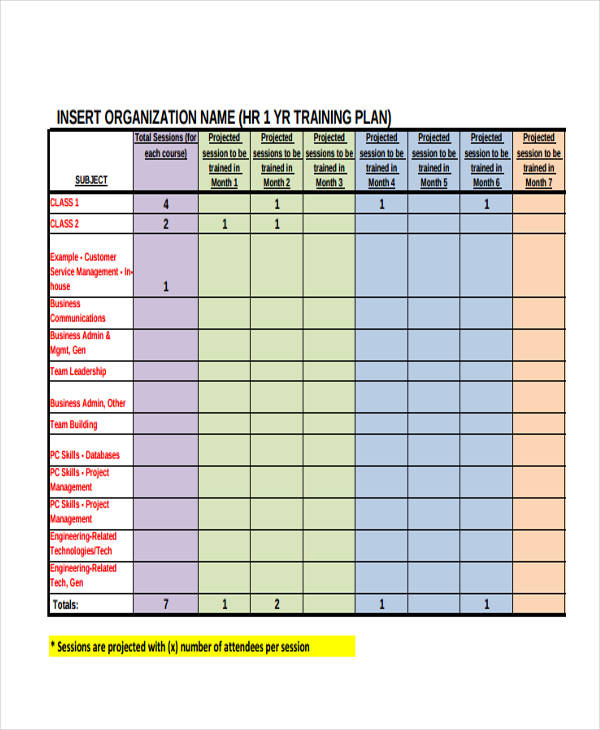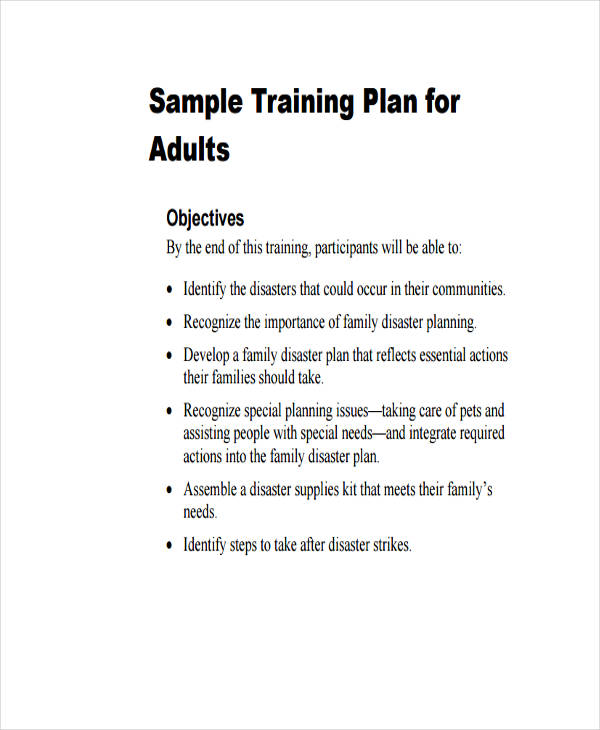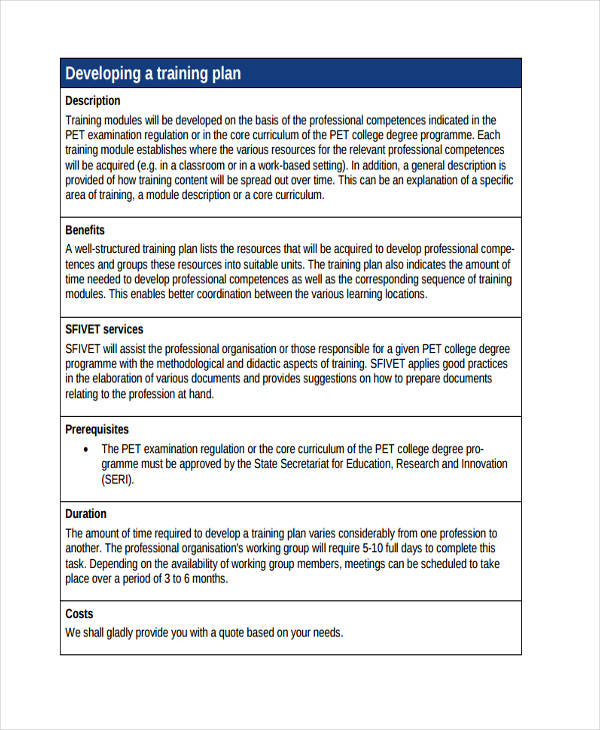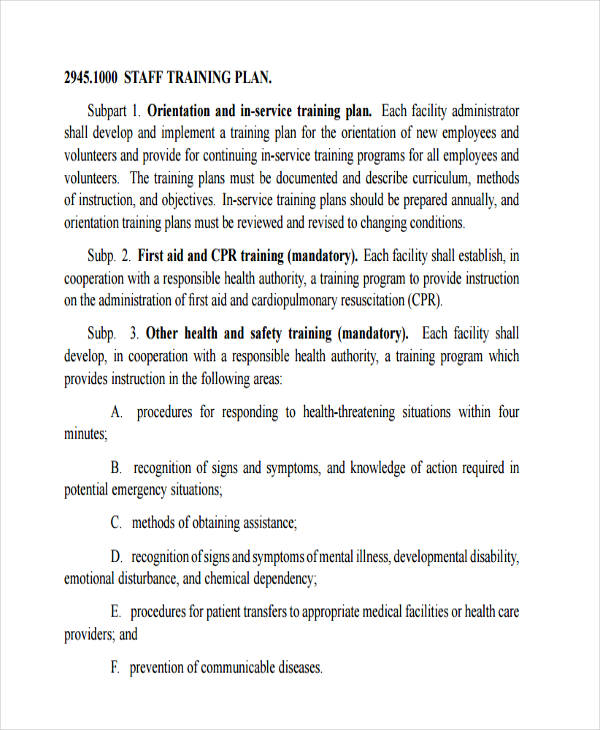35+ Training Plan Examples to Download
What allows businesses to succeed? One would argue that it’s the act of planning. After all, in the world of business, planning is an extensive process that plays a crucial role in the company’s overall operations. Others would also say it’s training. Well, why can’t it be both? Company meetings are conducted to strategically develop these training plans. They discuss issues that need to be addressed and a call to action. From there, they work on preparing themselves for probable obstacles that may slow down operations and lower sales. For some examples of training and development programs for employees, take a look at the template selection below.
35+ Training Plan Examples
1. Sales Training Plan Template
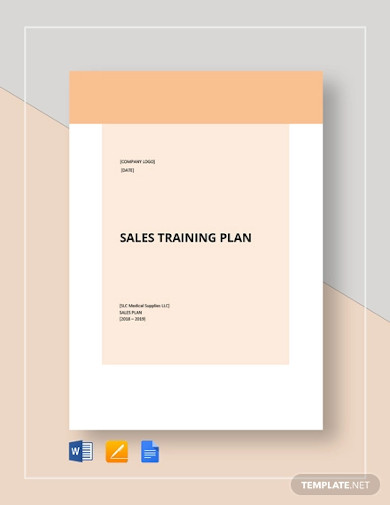
2. Annual Training Plan Template
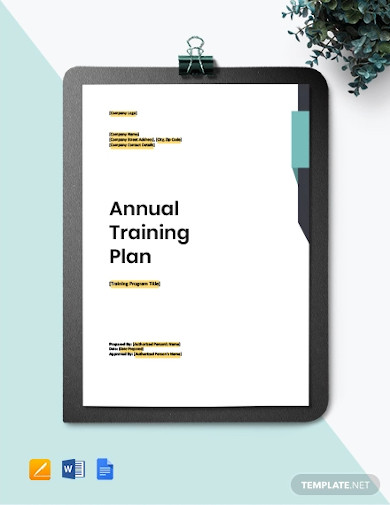
3. Blank Training Plan Template
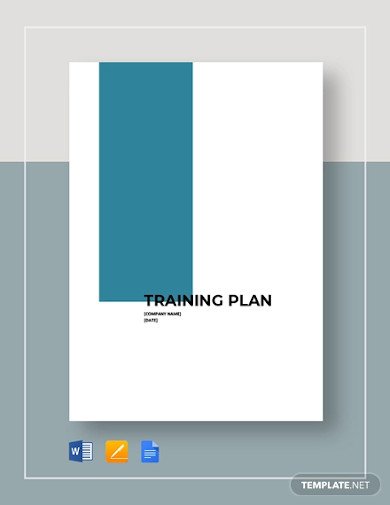
4. Training Strategy Plan Template
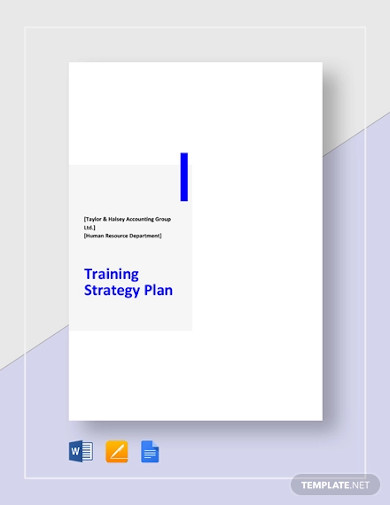
5. Training Plan Example
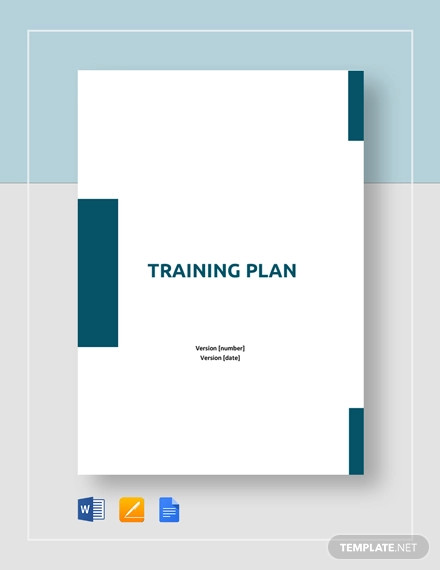
6. New Staff Training Plan Template
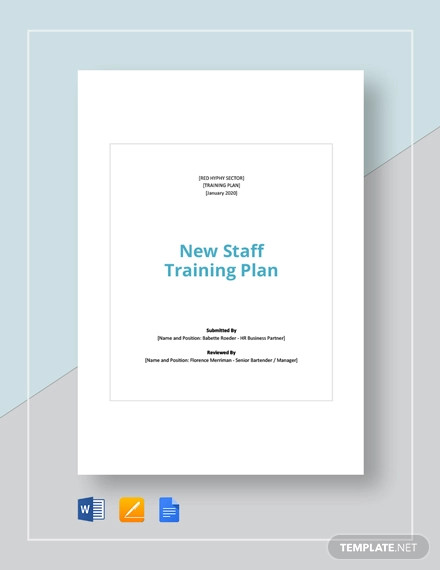
7. 30-60-90-Day Training Plan Example
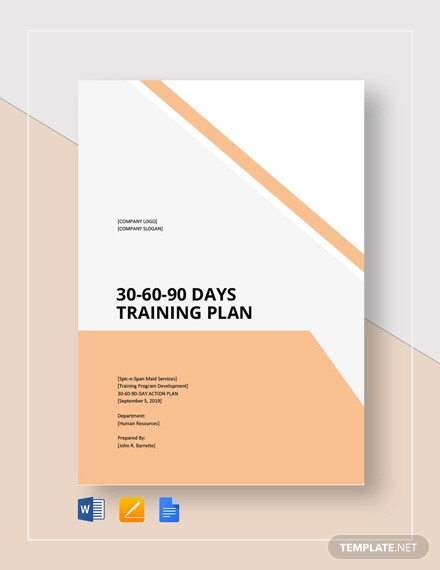
8. Corporate Training Plan Template
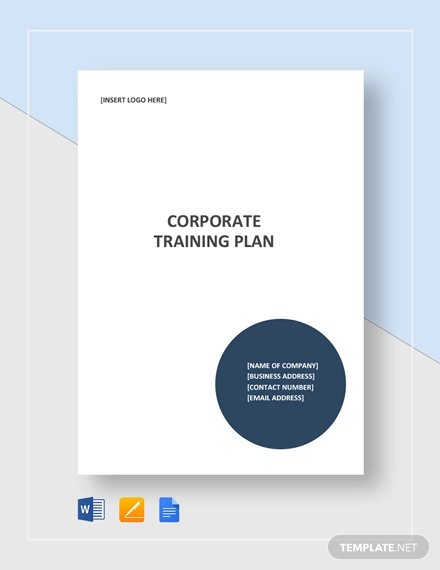
9. Example of Training Action Plan Template
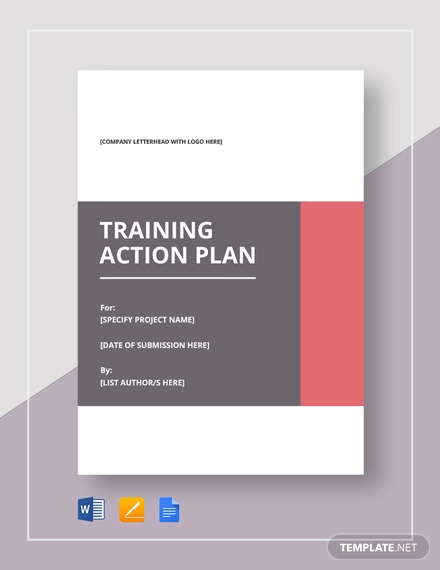
10. Employee Training Plan Template
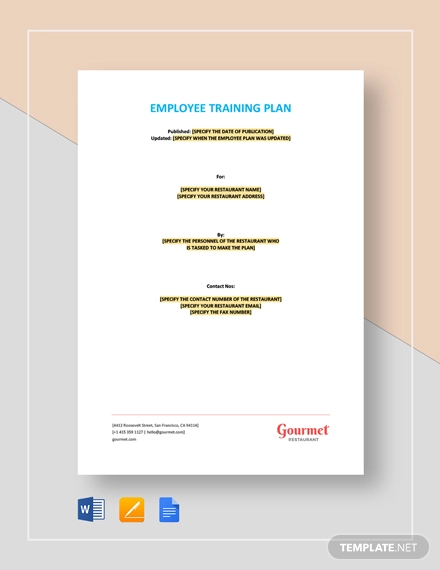
11. Sample Dog Training Planner Template
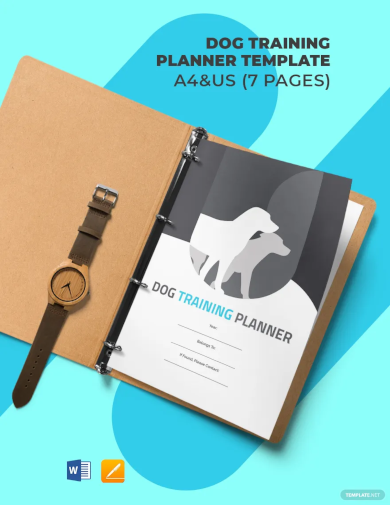
12. Sample Training Plan Template
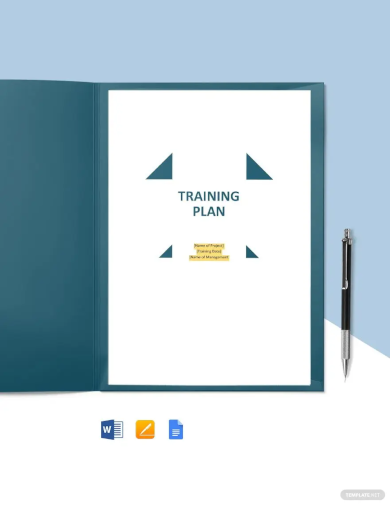
13. Employee Training Planner Template
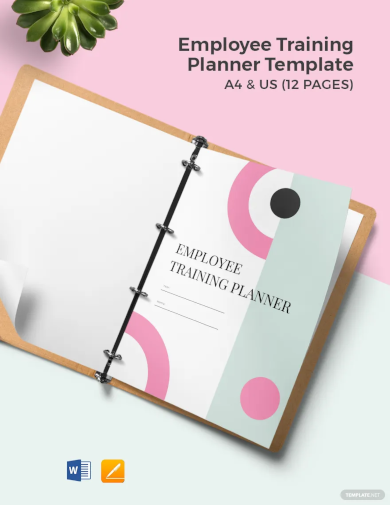
14. Basketball Training Planner Template
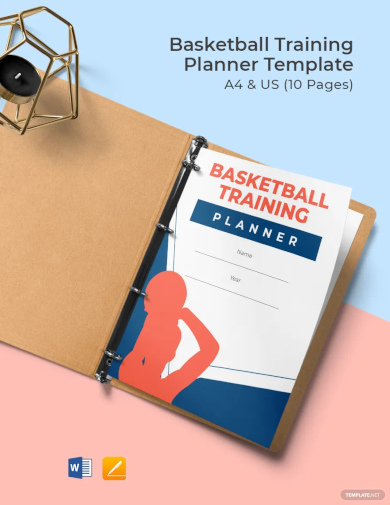
15. New Employee Training Plan Template
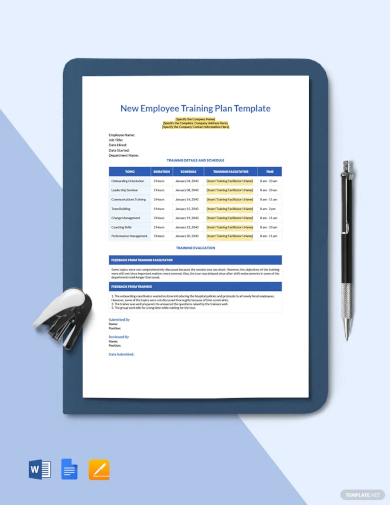
16. Pet Training Planner Template
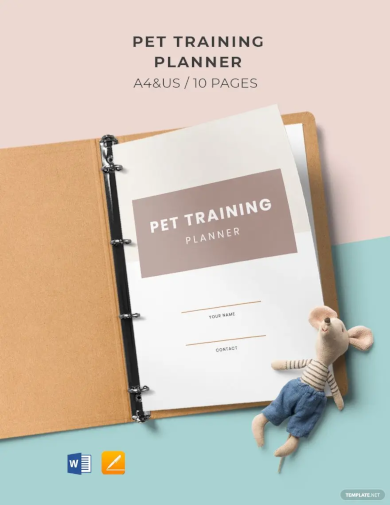
17. Sample Weekly Training Planner Template
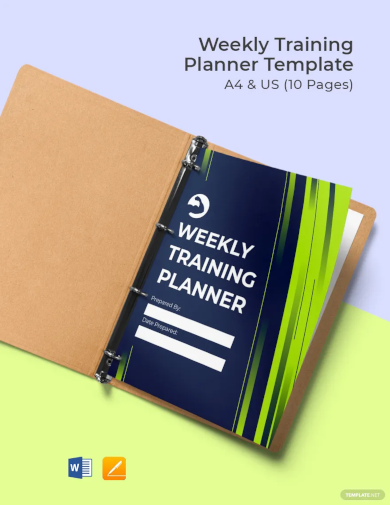
18. Basic Training Planner Template
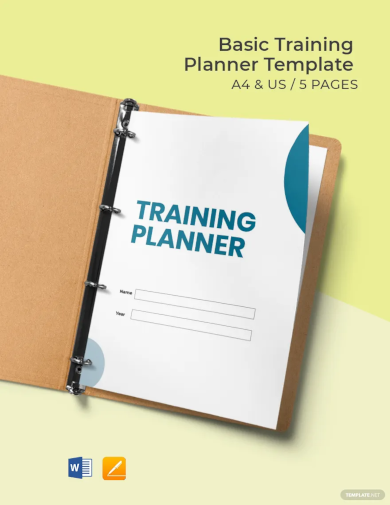
19. End-user Training Plan Template

20. Monthly Training Plan Template
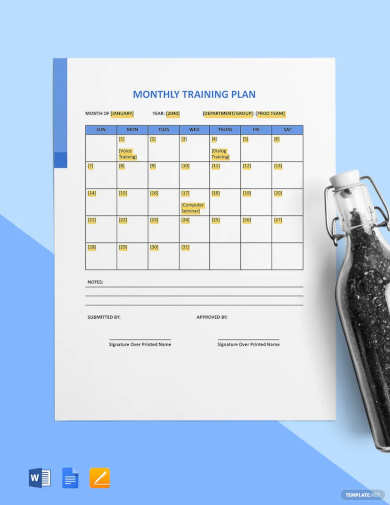
21. Training Plan Gantt Chart Template

22. School Training Plan Template
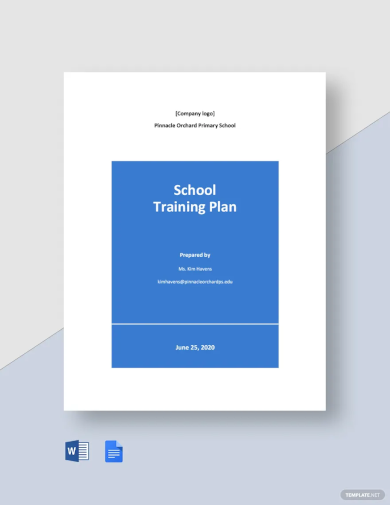
23. Agency Training Plan Template
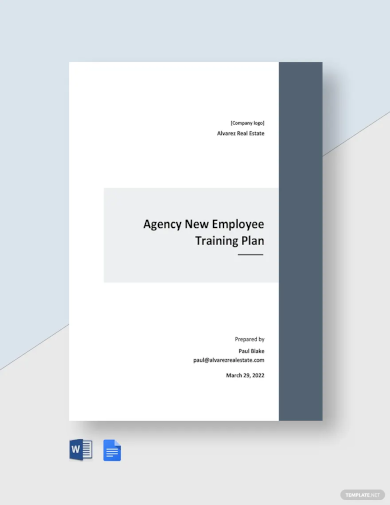
24. Fitness Training Plan Template
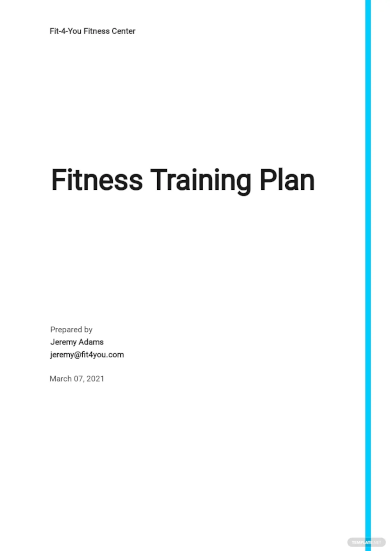
25. Employee Annual Training Plan Template
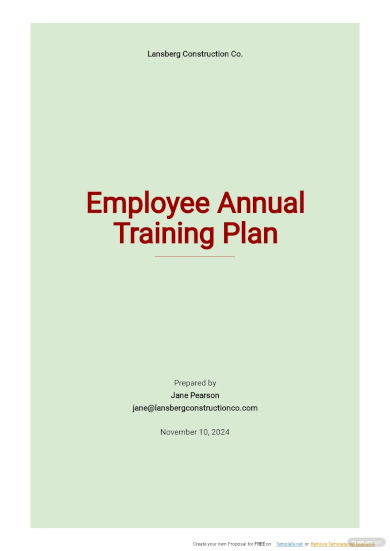
26. Individual Employee Training Plan Template
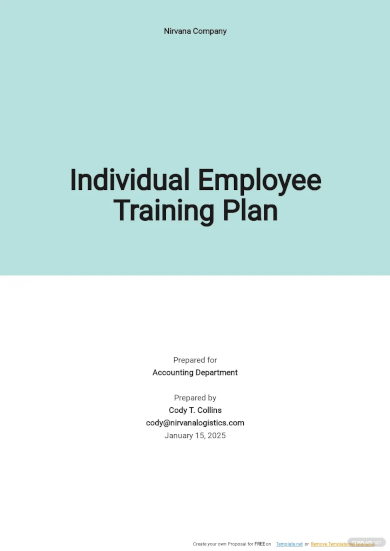
27. Yearly Employee Training Plan Template
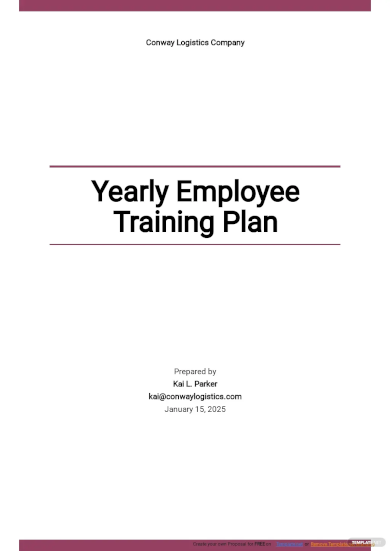
28. Annual Training Plan
29. Employee Training Plan Sample
30. Strategic Training Plan
31. Individual Training Plan
32. Quality Plan Example
33. HR Training Plan
34. Training Plan for Adults
35. Developing Training Plan
36. Staff Plan Example
Training Plan and Its Importance:
Training programs should never be underestimated in their scale and importance. Having a plan in mind can help administrators understand what needs to be done during the training period for the new hires. Remember that learning has no limit. It is an ongoing experience that can further one’s development. Considering how competitive the corporate market is, it is vital for employees to receive the proper training.
Like many other learning programs within an organization, it will involve a strategic plan as you work on developing something effective and beneficial to both the trainee and the company. This helps avoid the wasting of invaluable time and company resources. A good training plan also involves seminars, orientations, hands-on activities, and the like. It’s worth noting that it bears similarities to a risk plan since it ensures that the defined objectives are met.
How to Create a Training Plan
Now that you’re aware of its importance, now the question we turn to is how do you write a training plan? If downloading a corporate training plan template or a training structure template doesn’t appeal to you, then maybe the following creation steps will. A new employee training plan does not need anything overly complex or difficult, but it does require a few elements. Without further ado, let’s get started on creating a training plan outline with the very first step.
Step 1: Assessment and Learning Principles
The first thing to do while creating a training plan is to know what your learning principles are and what is it that you want to assess. Programs require training needs assessment because it helps determine how well the new hires learned what was taught during training and what else can be done to make the training better.
Step 2: Develop Learning Objectives
The development of corporate goals is important for any organization for the sole reason that these provide direction and guidance. When it comes to designing a training program, the same purpose rings true. A few training goal examples would be to instill greater accuracy in making reports or to help make employees more effective at their research. Divide the employees into levels, which makes it easier for you to determine which way they need to work and who needs to work harder to attain these goals. Keep your goals specific, measurable, achievable, relevant, and time-bound.
Step 3: Training Materials
The next step would be to make a list of all the materials you need to fulfill the training process successfully. Action plans that are available online can be of great help for you to create the right kind of a plan, no matter which industry you work in. It is important that you have a plan ready for it, so it can be easily obtained.
Step 4: Implement Training
Once, you are ready with your plan, make sure that you implement it, so as to check what are your strong points and what are your weaknesses, which you can turn into strength too. Keep in mind your objectives and learning principles while implementing the training Keep the training process on record, so that you can keep a check on the training that is bound to happen.
Step 5: Review and Evaluate the Plan
Evaluation of the plan is very important, as it gives a brief idea of where you stand and what do you need to do to make your organization better. But before you evaluate the implemented plan, make sure that you review it well, just so to make any changes that need to be made. Evaluate your plan and check if there are any more changes to be made to make it better and more effective for you and your team. Check transition plan examples for more details on how to create the right kind of a plan.
FAQs
What is a Training Plan?
This is a detailed document that guides the planning of the training outline and the delivery of what needs to be done. Whether it is training people in one-on-one, in groups, in person, or online, a well-developed training plan allows one to prepare and deliver effective training sessions.
What should be included in a Training Plan?
There are multiple details that a training plan can include. The first would be a lesson report. Then would be the lesson objectives, the specific activities and assessment plans, pre- and post-test results, and class discussions. Lastly, one can include any group activities and the predicted length of each lesson.
What are the key objectives of a Training Plan?
There are many objectives a training plan can have. One is to increase efficiency in processes. Another would be to increase motivation and engagement amongst employees. Then there’s the objective of reducing employee turnover, Lastly, there are the objectives of improve the already-present skills of employees and maintain risk management.
Now that we’ve come to the end of this article, the provided examples of training programs in companies should help you develop one on your own. The same goes for the aforementioned steps. Take what you’ve learned today and ensure that any future employee you hire reaches his or her full potential. Don’t waste any more time and get started as soon as possible!



